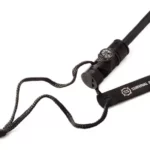Long-distance hiking requires careful planning and preparation, especially when it comes to packing your backpack. A well-packed backpack can make your hiking experience more comfortable, efficient, and enjoyable.
Here we provide a guide on how to pack a backpack for long-distance hiking, covering essential tips, techniques, and gear organization strategies.
Table of Contents
Choosing the Right Backpack
Size and capacity
Select a backpack with an appropriate size and capacity for your hiking needs and the duration of your trip. Consider factors like your body size, gear requirements, and the length of your hike when choosing a backpack. A properly sized backpack will ensure a comfortable fit and adequate space for all your essentials.
Comfort and fit
Ensure your backpack fits well and is comfortable to wear for extended periods. Look for features like adjustable suspension systems, padded shoulder straps, and ventilated back panels. A comfortable backpack will reduce fatigue and prevent strain on your body during long hikes.
Organizing Your Gear
Weight distribution
Pack your heaviest items close to your back and centered between your shoulder blades. This helps maintain a stable center of gravity and reduces strain on your back and shoulders. By keeping the weight close to your body, you’ll improve your balance and stability on the trail.
Packing zones
Divide your backpack into three main zones: bottom, middle, and top. Pack bulky, lightweight items like your sleeping bag and pad at the bottom. Place heavy items like food, cooking gear, and water in the middle zone. Keep frequently used items like rain gear, snacks, and navigation tools in the top zone or outer pockets for easy access. This organization strategy will make it easier to find what you need without having to unpack your entire backpack.
Compression and balance
Use compression straps to cinch down your load and prevent items from shifting during your hike. Ensure the weight is evenly distributed on both sides of your backpack to maintain balance. Proper compression and balance will improve your comfort and stability on the trail.
Essential Gear to Pack
Shelter and sleeping system
Pack a lightweight tent, tarp, or bivy sack for shelter. Include a sleeping bag and sleeping pad appropriate for the expected weather conditions. Your shelter and sleeping system should be compact and lightweight to minimize the overall weight of your backpack.
Clothing and layers
Bring versatile, moisture-wicking clothing layers that can be easily added or removed. Pack rain gear, insulating layers, and extra socks to stay dry and comfortable. Choose clothing made from quick-drying, breathable materials to regulate your body temperature and prevent chafing.
Food and water
Pack lightweight, calorie-dense foods like trail mix, energy bars, and dehydrated meals. Carry a water filtration system or purification tablets to ensure access to safe drinking water. Plan your food and water supplies based on the duration of your hike and the availability of water sources along the trail.
Include a map, compass, and/or GPS device for navigation. Pack a first-aid kit, emergency shelter, and communication device for safety. Familiarize yourself with the trail and potential hazards, and always let someone know your hiking plans before setting out.
Tips for Efficient Packing
Use stuff sacks and organizers
Organize smaller items like clothing, toiletries, and electronics in stuff sacks or packing cubes. This helps keep your backpack tidy and makes it easier to locate specific items. Color-coded or labeled organizers can further simplify the packing and unpacking process.
Minimize duplicate items
Avoid packing duplicate items to save space and weight. Coordinate with hiking partners to share gear like tents, stoves, and cookware. By dividing the weight of shared items, you can reduce the overall load in your backpack.
Repackage food and supplies
Remove excess packaging from food and supplies to reduce waste and save space. Transfer items like snacks, toiletries, and first-aid supplies into smaller, lightweight containers. This will help you maximize the available space in your backpack and keep it organized.
Conclusion
Packing a backpack efficiently is crucial for a successful and enjoyable long-distance hiking experience. By choosing the right backpack, organizing your gear strategically, packing essential items, and following efficient packing tips, you can ensure a comfortable and well-prepared journey on the trail.
Remember to adjust your packing strategy based on the specific needs of your hike and the weather conditions you expect to encounter. With a well-packed backpack, you’ll be ready to embark on your long-distance hiking adventure with confidence and ease.
For more tips on preparing for your backcountry adventure, check out our beginner’s guide to backcountry camping. Happy hiking!







Leave a Reply